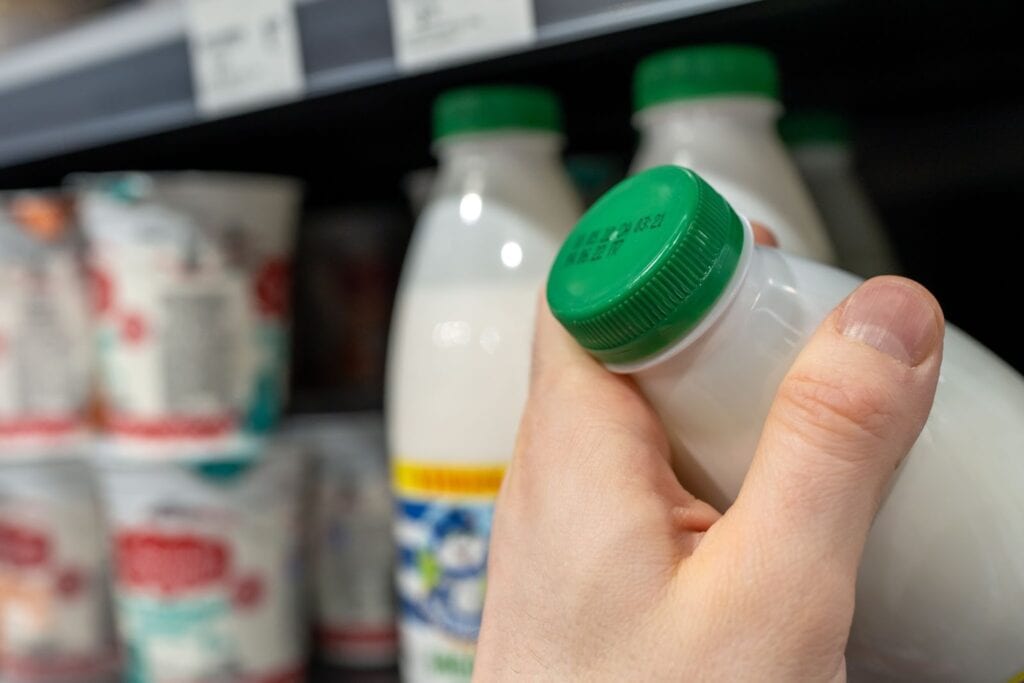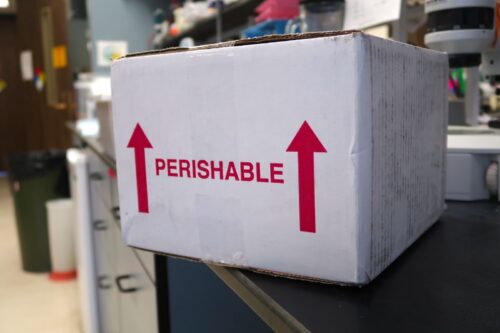Perishable Cargo: Meaning, Examples, and Regulations

Navigating the complexities of transporting perishable cargo can be daunting. Did you know that these goods encompass a vast range of products, from dairy, frozen food and other meat products to live plants and seafood? This article unravels the meaning, examples, and regulations surrounding perishable cargo transportation.
What is Perishable Cargo?
Perishable items refer to products that have a limited shelf life and can spoil or deteriorate over time. These perishable goods include foods such as meat, poultry, fish, dairy products, and cooked leftovers.
Unlike nonperishable items like peanut butter or canned fruit, perishables require specific storage conditions to remain safe for consumption. It’s important to keep high-risk foods refrigerated below 5 °C or heated above 60 °C to avoid the temperature danger zone and prevent food poisoning.
Proper handling and transportation in temperature-controlled environments are crucial for ensuring the safe delivery of perishable goods.
Perishable Air Cargo
Transporting perishable cargo by air presents a time-efficient solution, especially for items with short shelf lives. Using state-of-the-art equipment, carriers like American Airlines Cargo ensure the fast and safe delivery of goods such as fresh fruits, vegetables, and live tropical fish.
This method requires strict adherence to Air Cargo Operations guidelines and the use of tools such as an air waybill for seamless shipping processes.
Perishable Cargo by Transport
Efficient transportation is crucial for perishable cargo to ensure safe delivery. Each type, whether dairy products or live animals, necessitates specific conditions during transport.
Shippers employ refrigeration facilities and specially trained staff to maintain the right temperature and humidity levels for temperature sensitive cargo being shipped in bulk. Adhering to these standards guarantees fresh, undamaged goods at the destination regardless of travel time or distance involved in transportation.
Perishable Meats, Fish and Seafood: Frozen and Fresh
Frozen or fresh meat, fish, and seafood products require vigilant handling during transportation. Their shelf life is substantially reduced without proper temperature control and packaging.
For perishable shipments, from the moment they leave the processing plant, maintaining freshness in transit is key. Be it frozen or fresh items, quality preservation techniques are vital for safe delivery to consumers.
Effective cold chain management ensures nutritional value remains intact throughout the journey.
Perishable Dairy Products: Eggs, Milk, Cheese, Yogurt, Ice Cream
Perishable dairy products such as eggs, milk, cheese, yogurt, and ice cream are susceptible to spoilage during transportation. These items require special care to maintain their freshness and quality.
Temperature control is crucial to prevent bacterial growth and ensure the safety of these perishable goods. Packaging plays a vital role in protecting dairy products from damage and maintaining their taste and texture.
Whether it’s ensuring proper refrigeration facilities or specially trained staff handling the shipments, every step is crucial for the safe delivery of these delicate dairy products.
Transporting Live Seafood, Animals, Plants, and Fresh-Cut Flowers
The transportation of live seafood, animals, plants, and fresh-cut flowers requires careful handling to maintain their freshness and quality throughout the journey. Air transport is commonly used for these perishable items as it offers shorter transit times and helps preserve their delicate nature.
For example, live seafood like fish needs to be transported quickly by air to ensure its freshness upon arrival. Similarly, fresh-cut flowers are often flown in special containers with temperature control to extend their short shelf life further.
Specialized logistics companies provide expertise in handling these unique cargo types while adhering to regulations for optimal delivery conditions.
Other Frozen or Wet Products
In addition to the more commonly known perishable goods like meat and dairy products, there are several other frozen or wet products that fall under the category of perishable cargo.
These can include items such as frozen fruits and vegetables, ice cream, seafood, juices, and even certain chemicals that require specific temperature control. The transportation of these items requires careful handling and adherence to refrigeration standards to ensure their quality and safety during transit.
It is crucial for businesses involved in transporting these goods to have proper refrigeration facilities, specially trained staff, and efficient delivery systems in place to guarantee the safe transport of these perishable products.
Packaging Standards

Packaging plays a crucial role in ensuring the safe transportation of perishable cargo. Proper packaging standards help maintain the quality and freshness of goods throughout their journey.
When it comes to shipping perishable items, several factors need to be considered, such as temperature control, packaging materials, and handling procedures.
To keep products at the right temperature, insulated containers or refrigerated trucks may be used. These containers are designed to maintain a specific temperature range that ensures the quality of the cargo.
Additionally, packaging materials like dry ice or gel packs can provide extra insulation for frozen or chilled goods.
By following proper packaging standards, logistics companies can guarantee that perishable products remain fresh throughout their journey from farm to table or manufacturer to consumer.
Remember: Good packaging is key to maintaining quality and preventing spoilage during transport.
Perishable Cargo Regulations( PCR) Explained
Perishable cargo regulations, also known as PCR, are guidelines and standards set by organizations like the International Air Transport Association (IATA) to ensure the safe and efficient transportation of perishable goods.
These regulations cover aspects such as temperature control, packaging requirements, labeling, and handling procedures. Understanding and complying with PCR is essential for ensuring that perishable products reach their destination in optimal condition.
IATA Perishable Cargo Regulations vs. PCR
The IATA Perishable Cargo Regulations (PCR) is a comprehensive manual that provides guidelines and best practices for shipping perishable goods by air. It covers container types, design principles, packaging requirements, and storage requirements and recommendations, and more.
The PCR helps ensure the safe delivery of temperature-sensitive products and minimizes the risk of loss or waste. It is important to note that the PCR is distinct from other regulations set by IATA and serves as a specific guide for handling perishable cargo.
By following the PCR, businesses can enhance their operations in transporting perishables while maintaining quality and freshness throughout the journey.
Benefits of Air Cargo
Air cargo offers several advantages when it comes to transporting perishable goods. It ensures faster delivery times compared to other modes of transportation, which is crucial for maintaining the freshness and quality of perishable items.
Also, air cargo allows for efficient transportation to remote locations that may be difficult to reach by ground or sea. This is especially beneficial for delivering perishables that require immediate attention, such as temperature-sensitive pharmaceuticals.
Benefits of Ground Transport
Ground transport offers numerous benefits for the transportation of perishable cargo. It provides flexibility in scheduling and routes, allowing for efficient delivery to various destinations.
Ground transport allows for specialized and efficient handling techniques and proper storage conditions throughout the journey. With specially trained staff and refrigeration facilities available, safe delivery is guaranteed.
When it comes to transporting items such as medical supplies or emergency goods that require special treatment, ground transport is particularly suitable due to its reliability and accessibility within supply chains.
Follow Perishable Cargo Regulations For Safe Delivery
Transporting perishable cargo requires careful attention to time and temperature, as these items are highly temperature sensitive items and can easily spoil if not handled properly. To ensure safe delivery, it is essential to follow perishable cargo regulations such as the IATA Perishable Cargo Regulations (PCR).
These guidelines provide valuable information on packaging standards, documentation requirements, and best practices for transporting perishable goods. By following these regulations and utilizing specialized transport equipment, such as refrigeration facilities and specially trained staff, you can guarantee the safe delivery of perishable products like fresh meat, dairy products, live seafood, flowers, and more.
